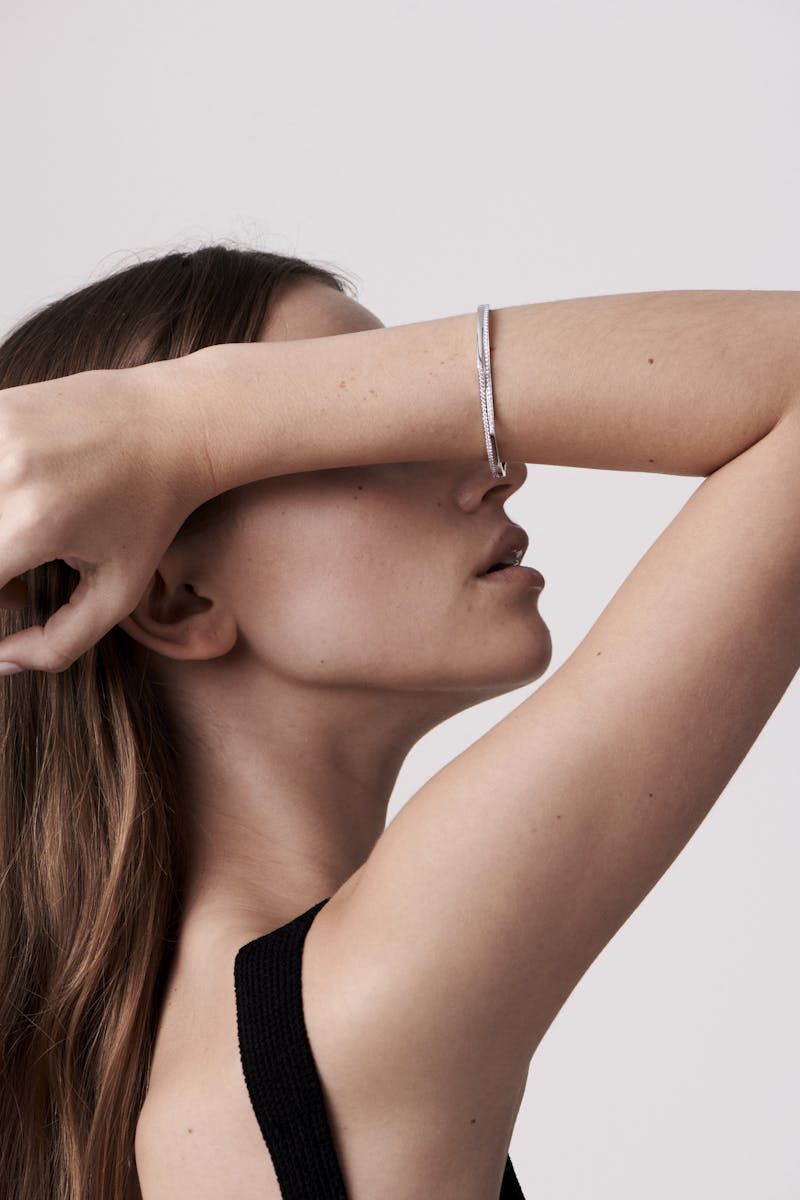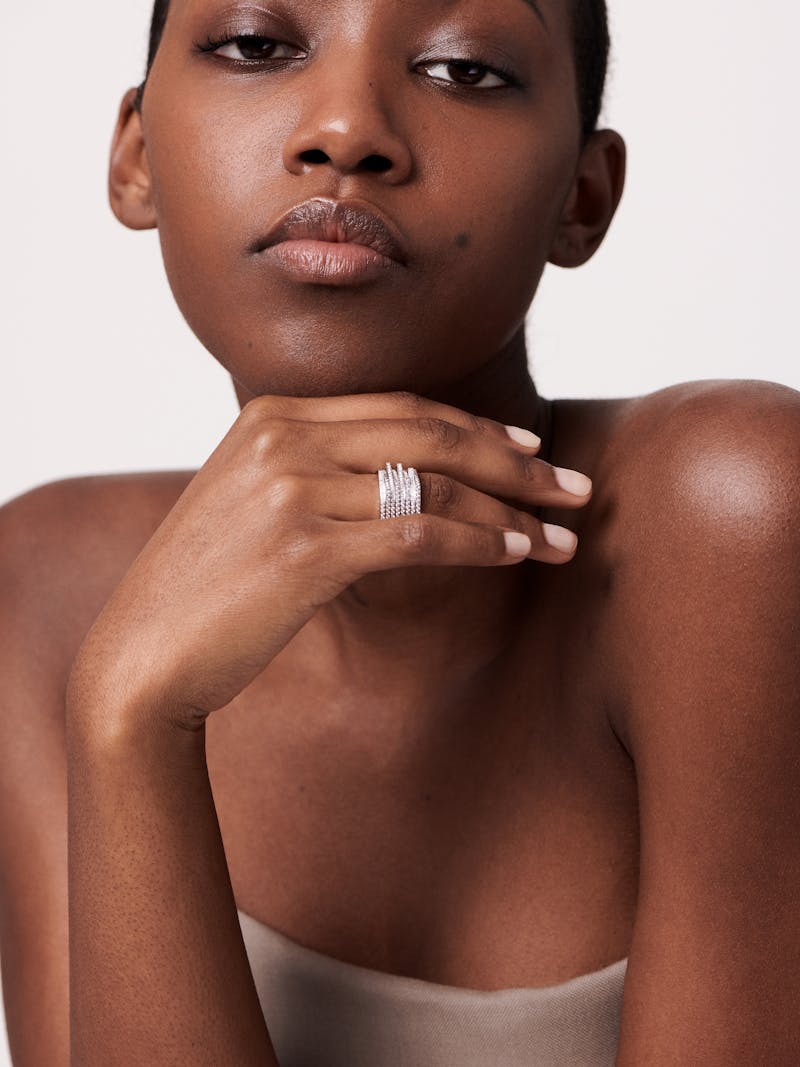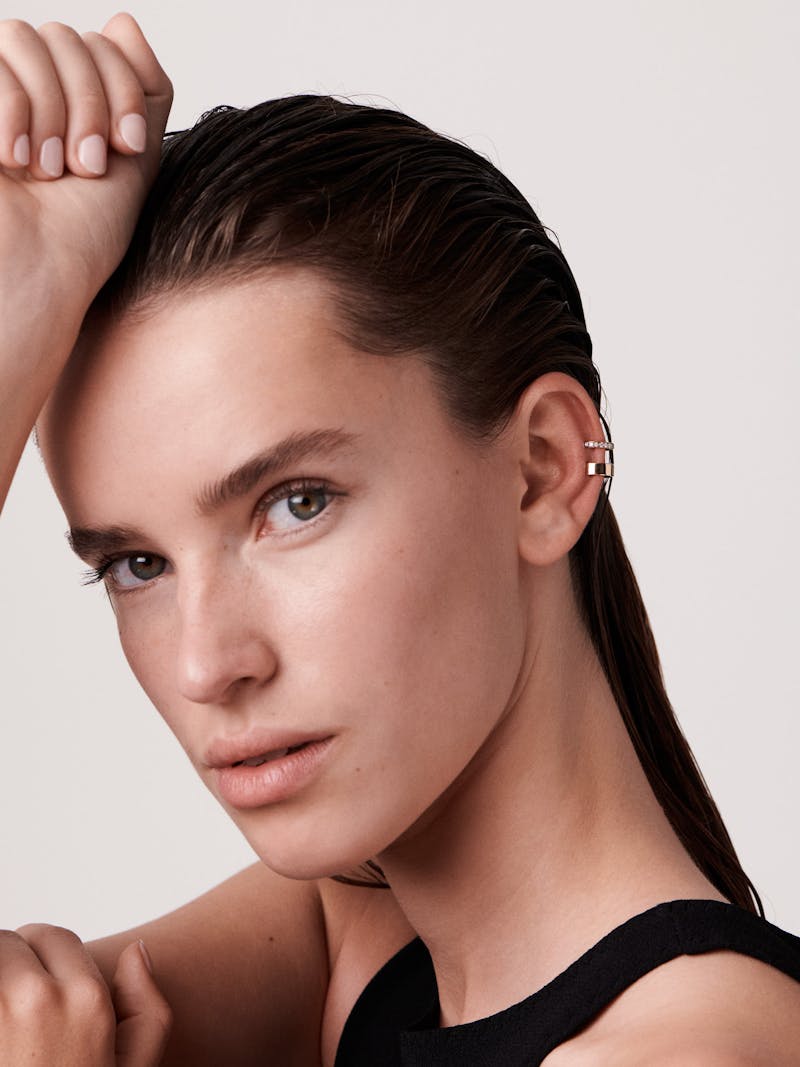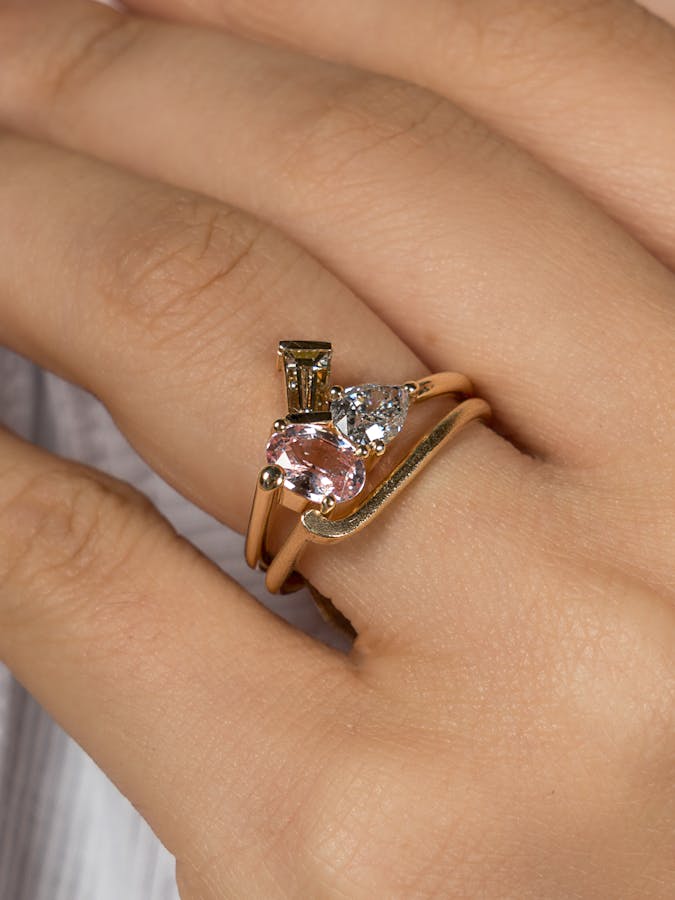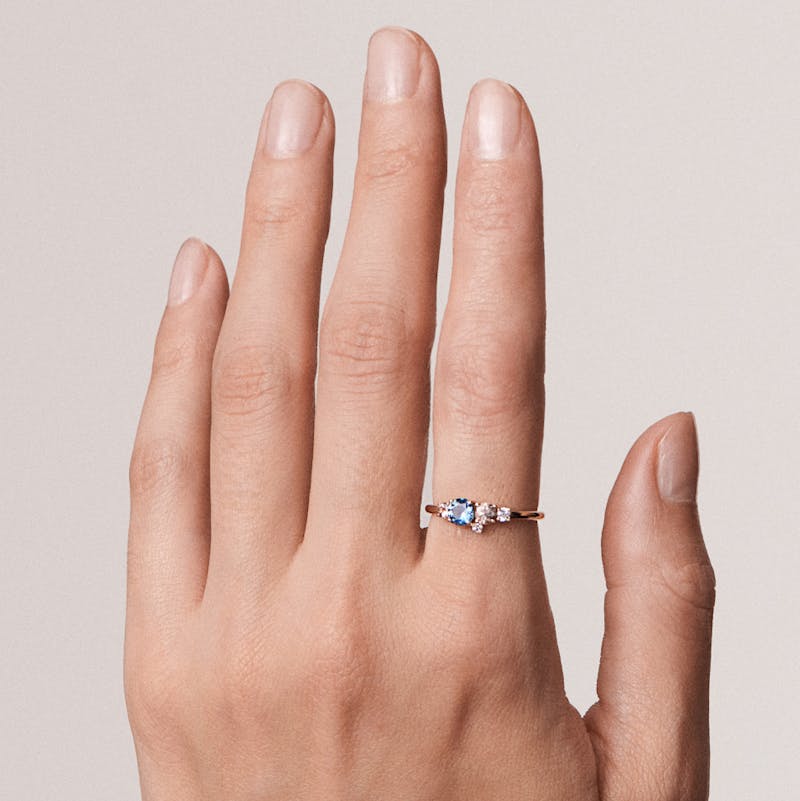Gaia Repossi
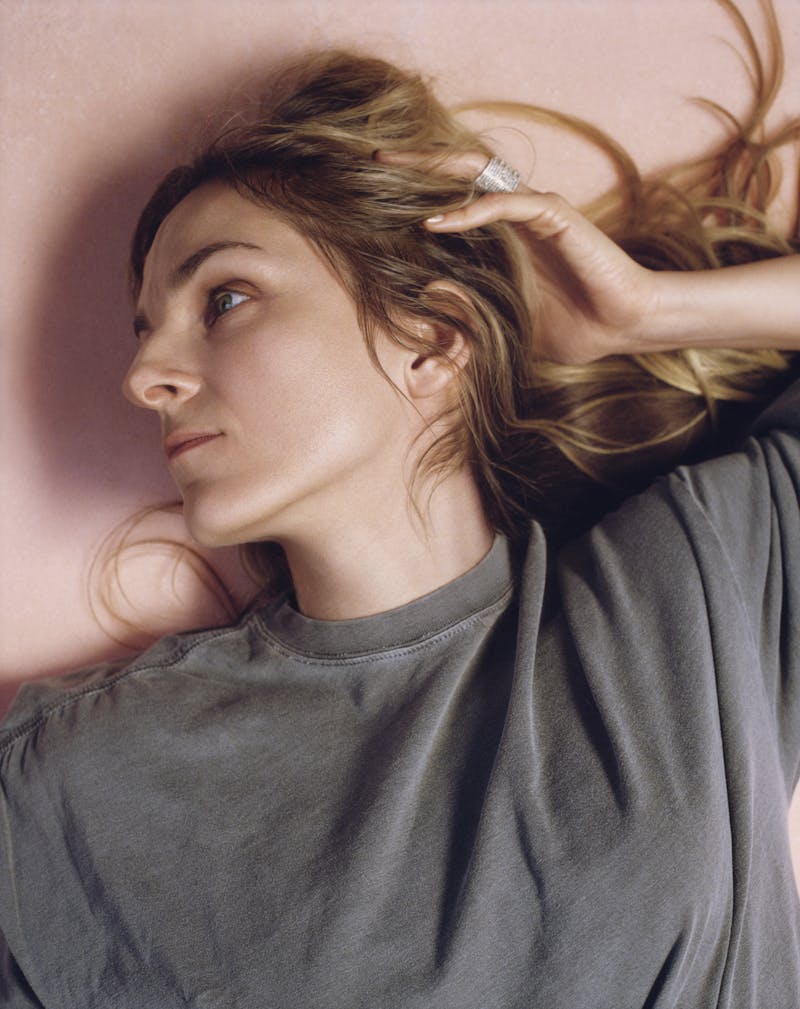
Gaia Repossi, a third-generation jeweller, helms the legendary Repossi house with a meticulous and visionary eye.
Repossi, a jewellery house run by the Repossi family through three generations, perpetuates the inherited family tradition of jewellery. Gaia Repossi, Creative Director since 2007, has regenerated the vision of the house by reinventing the traditional codes of jewellery.
She combines primitive jewellery with art and architecture to create bold pieces intended to be worn as a second skin. A new incarnation of timeless jewellery emblematically anchors Repossi as the most avant-garde jewellery house of the Place Vendôme.
Repossi was founded in 1957, so you come from a long history of creative jewellery talent, but initially, you studied fine arts. What convinced you to go into the family business after all?
I didn’t really want to do this profession, but I was living in Paris at the time, and my father had his communications and part of the design offices here in Paris. I slowly started advising him, and later on I tried a few projects and designs, and it worked. I think it was my father’s approach and his way of giving me freedom and total trust; I felt like I could express myself. The respect and the interest he had in giving me all the space I needed was a beautiful way to slowly convince me to finish what I started.
You were quite young when you entered the company, right?
I was still studying; I was only 19. And then by 21, I was already doing a lot.
I read that you put yourself in the position of a “stranger”, which allowed you to question the foundations of the old world, can you elaborate on this position?
What happens when you don’t necessarily want to do a certain profession or you are sort of an outsider because you are younger and you have a different point of view, is that you slowly develop a sort of distance that allows you to rethink things. One of the reasons why I wasn’t interested in pursuing this career was basically because of what I wanted to change. I was questioning why contemporary jewellery didn't fit nowadays silhouette. Why it was only fashion that reinvents itself and makes desirable things, and why jewellery really did not relate to me. I wanted an identity that women could relate to. I wanted an image that fit the time we are in now.
You took the house in a radical new direction, what was your vision initially?
There is a desire to simplify and democratize jewellery for an everyday outfit. It should be anchored in reality, and then it is about playfulness, fun, desire, statements, reinventing and proposing new positionings. That was very important. Looking at street, looking at tribal jewellery. Anything that is relevant and resonates and is desirable and fun. That is what makes my profession interesting again.
Opulence, and its place in a modern world, is a word that I keep reading in relation to your work and ideas. Can you explain your relationship with opulence?
I am interested mostly in design and its rigorous aspect. Of course, there’s artistic freedom, there’s the desire to express something new, but what I do is an applied art. It’s not art, it’s an applied art, and it requires perfection, it requires little objects, so there’s a rigorousness in design that requires two simple things; beautiful and desirable objects, simple and timeless, and then it has to have a certain discipline. You cannot deliver something that is not going to be relevant or beautiful to look at.
If jewellery is part of our intellectual heritage, it becomes about so much more than just the piece of jewellery in itself, right?
It has a language. A fashion statement or a trend. Even if we are aiming at something more with jewellery, it is a dialogue. You belong to the contemporary woman.
"I play a lot with the collective unconscious that is why I like antique and tribal jewellery. It is just a way to express a narrative and a dialogue."
You take inspiration from multiple sources, modern art and architecture specifically, can you explain how you translate these inspirations into jewellery?
When you do the same thing for many years, and you grow up in that, your eyes start adapting and you see it everywhere; sculptures, forms, everything is a ring. It becomes very fast, but then for me it also has, I wouldn’t say a romantic side, but a narrative. I play a lot with the collective unconscious, which is why I like antique and tribal jewellery. I mean, punk jewellery come from tribal jewellery. It is just a way to express a narrative and a dialogue. When a product carries that, it becomes more than a product. It is playful and when you wear it, it is something more than just adornment.
What does jewellery mean to you personally when you wear it?
For me, I am more interested in the design and the architecture of an object, and then I am more interested in the way it is worn. Maybe a different positioning, a different placement, an elongation of the hand, my father really taught me that it needs to embellish in a way. But what I mean is more about a gracious movement. The diamond is floating, and there’s an understated elegance to that; it is something that[MB3] you cannot describe, and that’s what I am attracted to.
Maybe that connects back to what you said before about the tribal jewellery, and punk being inspired by tribal. I took this statement from something you said, “a timeless perspective but in the future” and in this, I read a transcendence of time and a nonlinear and non-chronological understanding of time almost, because it expands and it goes back, but then it also points to the future?
Totally. It is a very fine balance for me. Of course, I love “less is more” and I think you can do a statement with nothing, but still the statement has to be big enough. I like objects to be recognizable with my own signature, and there’s a few paths that I follow in a very meticulous way with repetition, symmetry, stacking and unexpected placements.
There are endless variations?
Which is often the case in architecture. An architect or designer who has his own style generally have these systems that can be repeated infinitely. That’s why big architects or designers were able to be succeeded by their own things.
In some ways, you have quite an untraditional approach to jewellery.
The difference is… In the past, during Art Deco, it was actually real designers doing jewellery, the same ones who were designing furniture and architecture. If you have a mind frame like that and you bring in something that is interesting, that to me was what was lacking in jewellery. Real design is important. Also, I come from an old jewellery family house, so we have the taste, the elegance, the refinement of the old stones, of the craft, and how even the simplest piece has to be done. The European craftsmen, the French savoire faire jewellery combined with a touch of craziness. Every designer should know how to play with that in an identity.
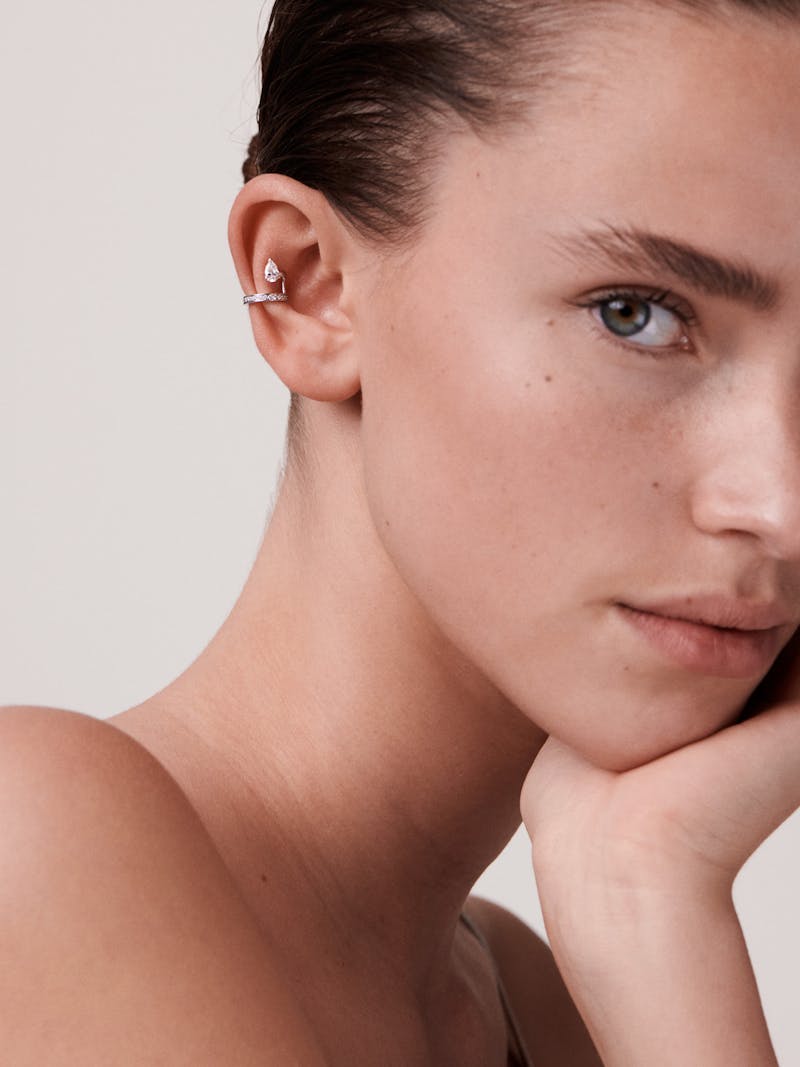
For the identity, you also work with image makers like Juergen Teller, Glen Luchford and Zoe Ghertner to develop imagery for your collections, pushing the ideas of traditional jewellery portrayal, what does this add to your world?
For me image is very important. It is a way to express the DNA of the brand, especially when you work with simple objects. When we started the Berbere collection, we had those ear cuffs, and everyone thought “wow, Repossi is so punk”, but not at all. We made a very elegant, very modern, very classic campaign where she didn’t look punk at all. For me, it was an excuse for making a refined object from that inspiration. It is not literal. Photography allows me to give an exact identity to that, sometimes it is playful, sometimes I like something statuary. It establishes a really clear message. I like her to be a bit severe. And then we are more playful obviously for Instagram and the other digital, it is a new world that has so much to express. Now, for instance, on Instagram, we are using a lot of young and unknown artists. We are giving them carte blanche. Because that’s now, we want their own interpretation. But beyond that, photography is an art medium. We have a few coming collaborations that are to that level and I am very excited about that.
I know we can’t travel so much right now, but it seems like travelling is very important to you?
It is. Even if we are a small brand, we are very connected world-wide, because we have a young audience. Of course, we are Italian, we have the French touch, but we are definitely very connected, and it is key nowadays for a modern brand to resonate in different countries and in global ways. I definitely miss traveling, not necessarily for inspiration, but I have a lot of connections everywhere, so I am very busy on these kind of tools [zoom, red.] to stay connected as much as possible.
You use this particular colour of rose gold, and there’s not that many brands that use rose gold this way. What is its meaning to you?
When I first started using rose gold, my father’s shades were already very low, so I tried to bring in even less, so we don’t really have yellow gold references anymore. It has this classic dimension almost of a yellow gold, but, because I don’t like the copper pink gold, the idea is to get closer to a place where it is almost pink or almost yellow, it should be a bit uncertain, and that’s our signature.
Do you have a favourite piece from your collection?
I worked on the 8-row Antifer for a very long time, which is a very long one, and it’s very strong, and I have a sample that actually moves. That’s one of my favourites. It’s very big, it’s very tall. We just developed a line that’s called Berbere Chrome with lacquer, there’s a navy black one and a light nude, it’s almost off-white, and very beautiful. But there’s a navy black one with a little line of diamonds on black gold, and that one is my current favourite. It is very beautiful. And thinking about repetition, that line is also called Berbere Modular. Architects use modules, and a lot of our variations are modular. I like the anti-commercial things, which makes the company a bit overwhelmed sometimes, but I like that the Antifer that I wear all the time is paved everywhere, on the back, in the corners, in the cracks, which is the most anti-commercial thing you could be doing, and it’s very tall, so when you bend your hand, it’s borderline uncomfortable, but I’ve been wearing it for many years. Pave like this is just very rare; it’s an old jeweller’s thing. You wouldn’t find it in the market right now.
In your opinion, what’s the role of jewellery today?
We are facing a time, I think it was already so, Covid or not, where we are starting to prefer quality over quantity. At least that’s my wishes. In that line, I think its role today is to bring maximum quality over quantity and possibly with objects that are so desirable, that maybe you just need one.
